When I first visited Iran, one of the most memorable experiences was being offered a glass of chilled sharbat on a warm spring day. It wasn’t just the refreshing taste of the rosewater and lime mixture that captivated me, but also the heartfelt hospitality behind it. As my host explained the centuries-old tradition of preparing sharbat for guests, I realized that Iranian drinks are far more than beverages—they are an integral part of the culture, reflecting history, seasons, and the art of balance in Persian cuisine. Whether it’s the invigorating doogh served with kebabs, the soothing chai sipped during family gatherings, or the colorful herbal teas infused with flowers and spices, each drink carries a story. If you’re curious about the flavors and customs that define Iran, exploring its drinks is a perfect way to start.
The Role of Drinks in Iranian Culture
In Iranian culture, drinks are not merely about quenching thirst—they symbolize hospitality, health, and harmony with nature. Every occasion, from a casual meeting to grand celebrations, includes thoughtfully prepared beverages. Whether served at family dinners, during religious ceremonies, or to welcome guests, drinks like chai (tea) and sharbat are key elements of social bonding.
Health and Balance in Iranian Drinks
Iranian drinks are deeply rooted in traditional Persian medicine, emphasizing balance between hot and cold foods. Many beverages include herbs, spices, or flowers known for their health benefits. For instance, herbal teas like gol gavzaban (borage tea) are consumed to relieve stress, while doogh (yogurt-based drink) is valued for its cooling properties.
Famous Iranian Drinks and Their Unique Flavors
1. Chai (Persian Tea)
A staple in every Iranian home, chai is brewed strong and served in small glasses with sugar cubes or sweets. The ritual of brewing and serving tea reflects hospitality and respect.
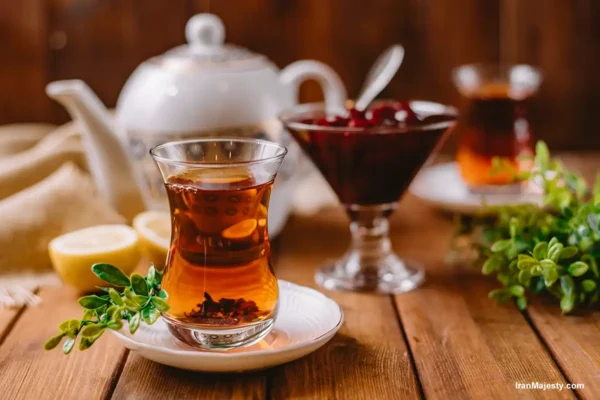
2. Doogh
This savory yogurt drink, often flavored with mint and sometimes carbonated, pairs wonderfully with grilled dishes. It’s both refreshing and rich in probiotics.
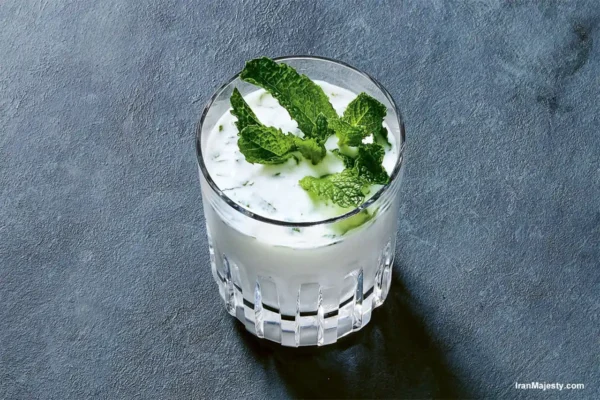
3. Sharbat
A variety of sweet drinks made by diluting fruit syrups or flower extracts like rosewater, sharbat is an essential part of Iranian hospitality, especially during summer.
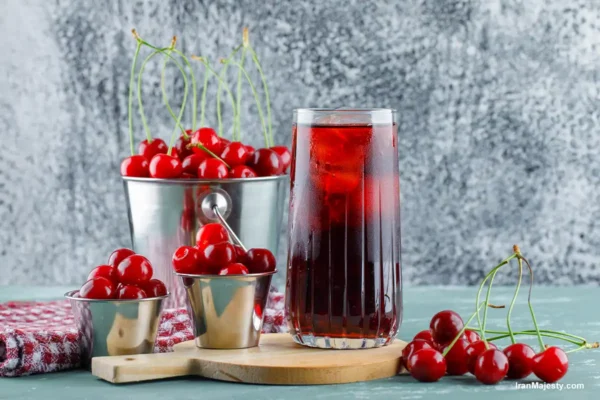
4. Gol Gavzaban Tea
This vibrant purple herbal tea, made from borage flowers, is believed to calm the nerves and uplift the mood.
5. Saffron tea
A luxurious drink made by blending saffron threads with tea, sometimes sweetened with sugar or honey. It’s a treat often associated with special occasions.
6. Sekanjabin
A sweet-and-sour syrup made with vinegar and honey, sekanjabin is typically served with grated cucumber or as a dipping sauce for lettuce.
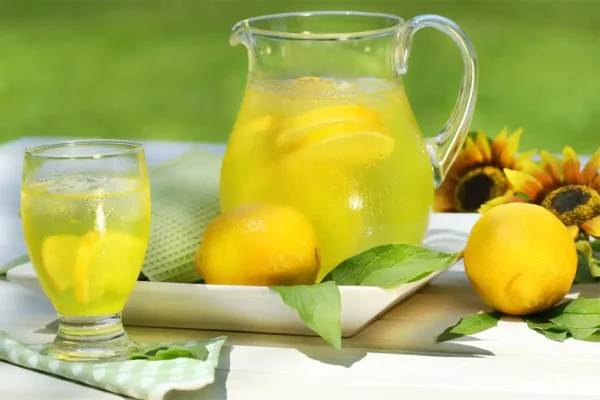
7. Khakshir
Tiny seeds soaked in water create this refreshing drink. It’s popular for its cooling and detoxifying effects during the hot summer months.
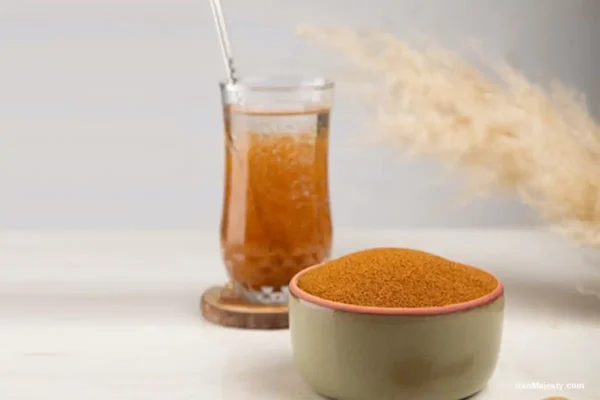
8. Persian Coffee
Although less common than tea, Persian-style coffee is brewed strong, often infused with cardamom, offering a rich and aromatic flavor.
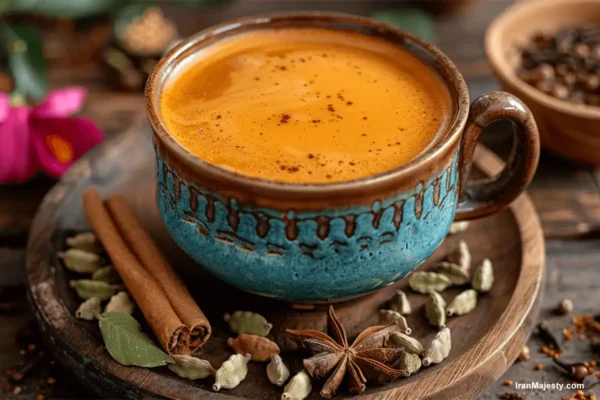
9. Herbal Teas (Damnoosh)
Iran is home to a wide variety of damnoosh, or herbal infusions, using chamomile, thyme, or lavender for specific health benefits.
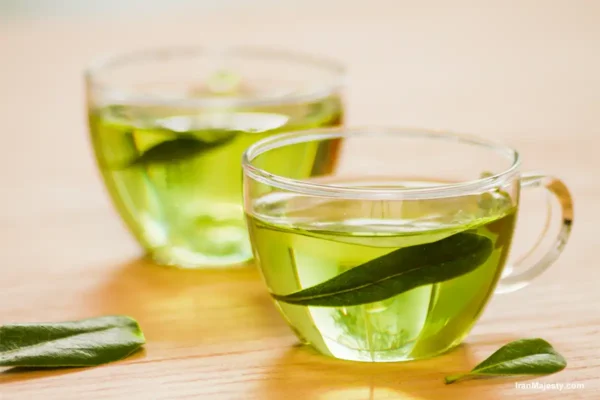
10. Zolbia and Bamieh with Tea
While not a drink itself, these sweet treats are traditionally paired with Persian tea during Ramadan and other celebrations.
The Seasonal Nature of Iranian Beverages
Iranian drinks reflect the seasons. In the scorching heat, sharbat, doogh, and khakshir provide much-needed refreshment, while in colder months, warm herbal teas and saffron tea bring comfort. These seasonal preferences showcase the deep connection Iranians have with nature and its cycles.
Do Iranians Drink Alcohol?
Although the sale and consumption of alcohol are officially illegal in Iran due to Islamic laws enforced by the government, alcohol consumption does occur, especially in private settings. Many Iranians, particularly in larger cities or among certain social groups, drink alcohol as part of their gatherings or celebrations. This practice is often done discreetly to avoid legal consequences, as public intoxication or possession of alcohol can lead to severe penalties.
Iranians who drink typically rely on homemade alcoholic beverages, such as arak (a distilled spirit) or wine, or acquire imported alcohol through unofficial means. Traditional winemaking, particularly in regions like Shiraz, has historical roots in Iran and continues to influence some underground production today.
Despite the legal restrictions, the practice of drinking alcohol is a reflection of a more liberal and diverse cultural undercurrent that exists alongside the country’s official rules. Visitors to Iran should be aware of the laws and avoid consuming or possessing alcohol while in the country, out of respect for local regulations and customs.
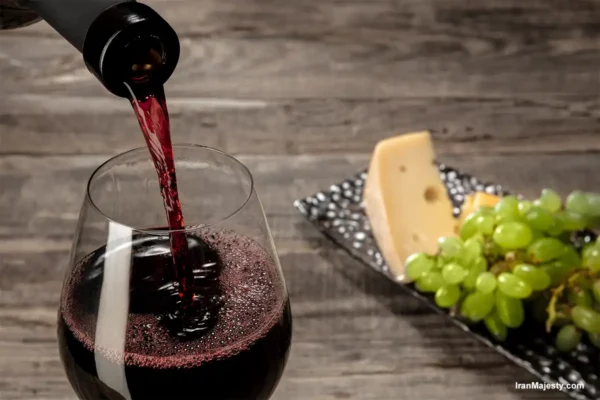
Conclusion: A Symphony of Taste and Culture
Iranian drinks are more than beverages—they are a celebration of tradition, health, and hospitality. From the elegant simplicity of chai to the artistic presentation of sharbat, each drink tells a story of cultural richness. Exploring these flavors is an invitation to experience Persian hospitality at its finest. As you sip on an aromatic cup of Persian tea or a glass of cool doogh, you’re not just enjoying a drink—you’re partaking in a centuries-old tradition that connects people through taste, warmth, and shared moments. Whether you’re visiting Iran or trying these drinks at home, they offer a delightful glimpse into the heart of Iranian culture.

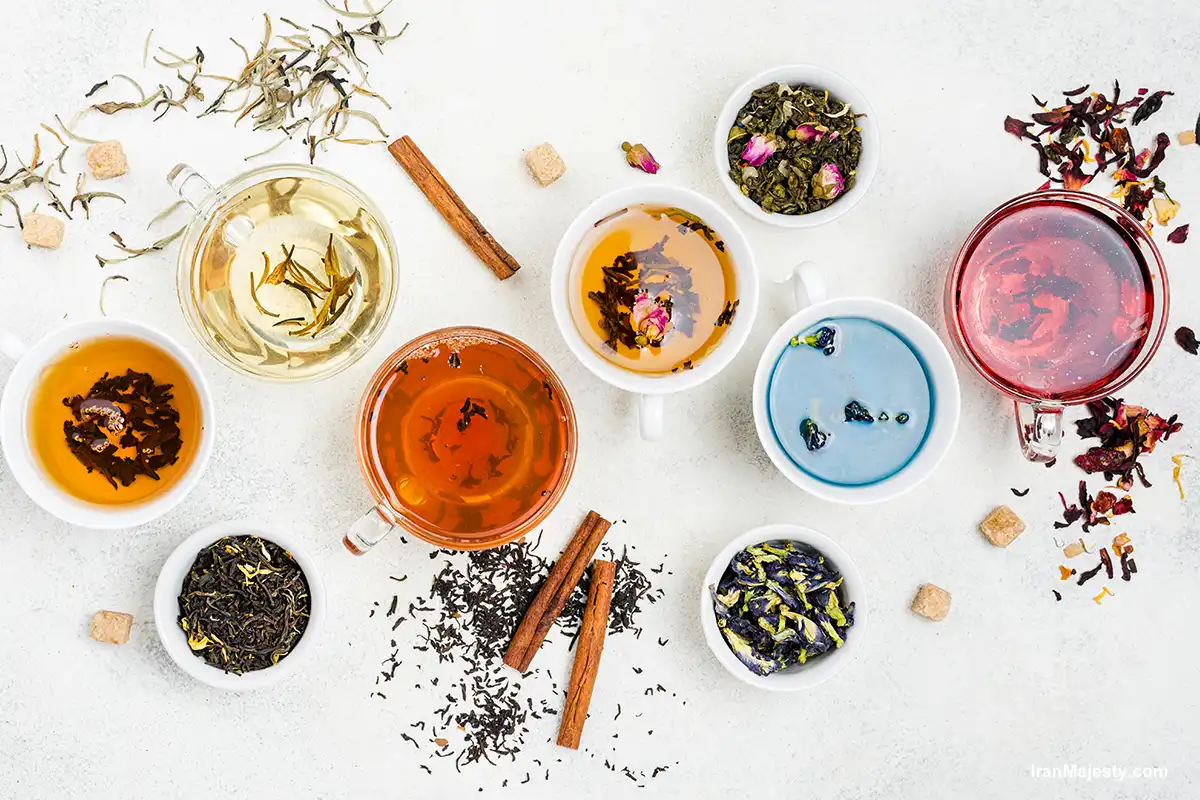
0 Comments